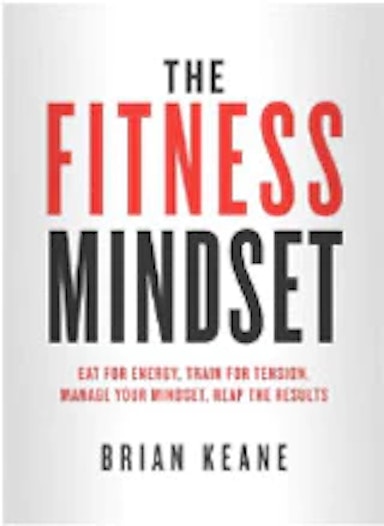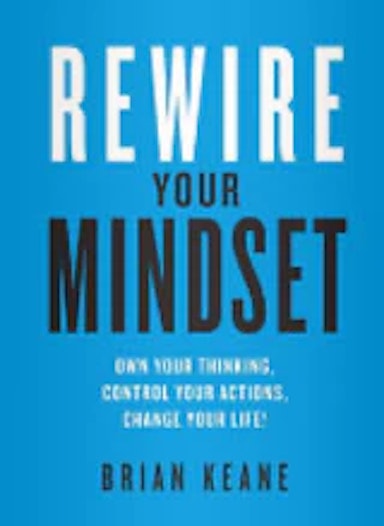Carb Cycling 101 And Sample HIIT Workout For GAA Players
- By Brian Keane
If you’re looking for the secret of how to lose body fat faster, gain muscle quicker and not only improve your performance on the pitch, but fuel yourself to last longer and go harder than ever before, then look no further than carb cycling.
True, your overall nutrition is the most important factor and you cant just cycle your carbohydrate and everything else will look after itself; but it is a major gun in your arsenal if you use it correctly. To keep that analogy, I like to think of protein and fat (the other two macro nutrients) like your pistol or hand gun. Supplements are like your knife or hammer and carbohydrate is like your rocket launcher! All tools that can support you, but some more powerful than others.
So before I go into all of the benefits of carb cycling, the next logical question is what is carb cycling?
What is carb cycling?
Carb cycling is kind of how it sounds – you are cycling your carbohydrate intake; simply meaning you consume more or less carbohydrate on different days. For example if you have a game at the weekend or a big training session on Saturday, you may increase your carbohydrate intake in the days leading up to that. Then to counter balance it, you would reduce your intake of carbohydrate on your ‘rest’ days – assuming its the not the day after the hard session or game of course; in that instance, you would keep your intake moderate or high to replenish glycogen stores and speed up your recovery.
Effectively you are utilising what is probably the most important macro nutrient for athletes and making it even more powerful for you.
Here’s a super basic example of how your carbohydrate intake might look:
High 300-600g of carbohydrate – hard training days or day before games
Moderate 150-300g of carbohydrate – training or gym days
Low 50-150g of carbohydrate – rest days
One of the mistakes I made when learning about sports nutrition first was focusing too much on carbohydrate. A little knowledge is dangerous and I knew athletes needed to eat carbohydrate so I loaded up on bread, pasta and rice; and not only did this not fuel me that well for training sessions or games but it also made me look kind of fat. Looking back it was probably more ‘bloat’ than fat as I was retaining so much water for all the carbohydrate I was eating but I also didn’t understand the difference at the time.
If you look at some of the incredible before and afters from my Lean Body Program, a lot of players had similar issues. True, their body fat reduced too but when you learn how to pull extra inflammatory food out of your diet and focus on the right nutritional strategy, you will reduce that bloat and lose body fat in the process; not to mention the massive increase in energy you’ll get from the changes.
8 Weeks Progress From Lean Body Program (Phase 1)
If you’re feeling bloated after meals or don’t feel like you’re digesting your food all that well, your body isn’t maximising absorption which in turns leads to less energy. Do the opposite and you get the opposite result. Improve your absorption of the food you’re eating and your energy levels will spike nearly over night. Carb cycling is a great way to do that as you focus on the ‘quality’ of the food you’re eating and not necessarily the quantity.
So what are some high quality foods you can eat?
Focus on high quality foods:
High quality foods is a bit of a ‘loaded’ tern as quality is subjective to each person. Protein bars are high quality foods to some people and true, they are especially if they’re compared to fast food or a white bread ham sandwich but to others, such as me, they’re glorified chocolate bars with 20g of protein (but they do taste amazing!).
However when I talk about ‘high quality’ foods, I mean nutrient dense whole food. Nutrient dense meaning they are loaded with vitamins, minerals or fibre that you need to maximise absorption.
Some examples are complete protein sources such as chicken, fish and beef or avocados, nuts and oils such as flax seed or olive oil. However when it comes to carbohydrate, this can be a little trickier as there are so man options and your independent tolerance levels are going to be an important factor.
For example in my Lean Body Program, some players eat wholegrain bread every single day (normally sandwiches at lunch time) and others focus mainly on quinoa, brown rice and vegetables. It varies depending on what works best for each person and I tailor this in the private Facebook group each time the program runs. However, you can do it yourself with some trial and error. I will put a list of quality carbohydrate foods below and my advice is to test them out.
Try eating them at lunchtime or before and after workouts or training sessions and track how you’re feeling. If you eat pasta and your stomach feels swollen afterwards, then that’s probably not the best food choice you could make at this given time. Try brown rice or sweet potato instead. The real secret is to find the carbohydrate foods you enjoy the most and then build your nutritional strategy around them. Personally I get most of my carbohydrate from vegetables, oats, rice and sweet potato. They’re the ones that work best for me and that I enjoy so there’s the ones I regularly eat.
The best carbohydrate sources:
These are just some of my personal favourites for my athletes but experiment with others as you need to.
- Brown or basmati rice
- Qunio
- Oats or porridge
- Wholegrain wheat bread (if you have no issue with gluten)
- Wholegrain pasta (if you have no issue with gluten)
- Vegetables (especially green leafy ones)
- Fruits (epically low or moderate GI– apples, pineapples, blueberries)
Carbohydrate to avoid or at least minimise
Again there are countless ones in this list but here are the main ones to look out for
- Table sugar
- Chocolate and biscuits
- Breakfast cereals or cereal bars (the sugar loaded ones)
- High sugar drinks (with the exception of some isotonic sports drink such as lucozade sport during or after workouts)
The danger here is in the dose. I have a lot of my players use a Pareto distribution 80:20.
80% of their carbohydrate come form whole grain nutrient dense versions and the other 20% come from sugary or refined sugars. Adherence or ‘what you can stick to’ wins above all else so whatever system you have to apply that gets you closer to your end goal that is sustainable for you is always going to be the winning formula.
The benefits of carb cycling
- Increased energy if you time it right and carb load correctly before games
- Faster fat loss as your metabolism stays elevated by manipulating carbohydrate regularly (metabolism can stall on some low carb diets)
- Potentially build muscle faster: this can be a debating point in the sports nutrition community but cycling carbohydrate can potentially make you more insulin sensitive meaning that you get an increased anabolic spike when you do consume these foods, which can potentially lead to more muscle gain (provided everything else is in order- your nutrition, calorie intake etc.)
- Its relatively straight forward to follow (especially if you have a plan) – low carbohydrate on rest day, moderate on training or gym days and high on days before games or super intensive training sessions.
The negatives of carb cycling or problems or problems to watch out for
- It can be tricky to adjust calories and fats so you’re calories don’t drop. If you’re carb cycling, your calories stay around the same each day which means you need to increase your fat on the days you reduce your carbohydrate to balance calories
- It can take a couple of weeks to find out what numbers you should work from i.e. 100g on low days, 200g on moderate days, 300g on high days etc.
HIIT workout to try:
If you’re looking to test out the carb cycling over the next week, use your moderate day intake and try this HIIT workout to see how your body is responding to the protocol.
Other relevant material
I’ve expanded on these ideas in the resources below too so feel free to check them out too.
GAA Lean Body Podcast – listen on Itunes, listen on Sticher (Android)
GAA Lean Body Guide (Free Ebook) – Click Here to download for FREE
Leaner Stronger Faster (my second book) – Click Here for Amazon UK
GAA Workout Sample Workout: Click Here to watch on Youtube
Conclusion:
 Of course your overall nutrition and calorie intake is the bottom of the pyramid of prioritisation and should always get the most focus but when it comes to changing your body composition and improving your performance, carb cycling can be the rocket launcher in your arsenal.
Of course your overall nutrition and calorie intake is the bottom of the pyramid of prioritisation and should always get the most focus but when it comes to changing your body composition and improving your performance, carb cycling can be the rocket launcher in your arsenal.
True, you can take a load of fat burning or muscle building supplements (some of which can work great, creatine, beta alanine etc.) but focusing on that by itself and not adjusting your nutrition is like bringing a knife to a gun fight, you’re asking for trouble. If you get your nutritional dialled in, you will not only see your entire body composition change, but your energy leaves and focus on the pitch will be the best its ever been too.
Lean Body Program – Starting March 4th 2019
My next Lean Body Program starts on March 4th. You can sign up and start straight away (but the tracking and Facebook group with me doesn’t start until the 4th of March) – However it is limited to 50 people so when it hits 50 people, the link closes.
For more information on this email Lean Body Program to brian@briankeanefitness.com
with Lean Body Program as the email title.






